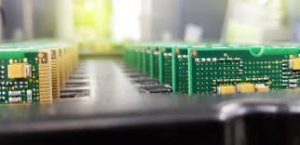Technology Circuit Board Assembly
When designing a circuit board, there are numerous factors that should be taken into account to ensure it will meet the needs of the final product. A critical consideration is the assembly process. If assembly is not taken into account at the initial design stage, it can lead to problems down the road during production. This is especially true when using mixed-technology PCBs, which incorporate both surface mount technology (SMT) and through-hole technology. The combination of these two different component circuit board assembly techniques provides a versatile and cost-efficient solution to many electronic applications.
One of the biggest challenges with mixed-technology PCBs is ensuring that all through-hole components are placed in a location where they can be soldered. This can be a challenge when using SMT components that require a large amount of power, such as power-rated resistors. The larger surface area of a through-hole component allows it to dissipate more energy than the smaller surface-mount version, which can potentially cause a short between the leads of the two components.
Through-hole mounting also allows for a more robust mechanical bond between components. This is important for applications that will be subjected to physical stress, such as high-power products or industrial devices. However, through-hole manufacturing can be more expensive than SMT fabrication. As a result, it is often used when the benefits of through-hole technology outweigh the added expense.

Mixed-Technology Circuit Board Assembly
Another challenge that can arise with mixed-technology PCBs is determining the best placement of through-hole and SMT components on a given board. For example, a design may call for a small, dense circuit board that requires an extensive number of through-hole components in a tight space. In this case, the designer should consider using SMT-compatible components that can handle the amount of power needed for the circuit.
In addition, designers should ensure that the footprint for SMT and through-hole components is clearly defined and separated to avoid any issues with spacing during assembly. This will ensure that the boards can be assembled without any confusion and will help to avoid costly errors.
Having the right tools and equipment available for PCB assembly is critical to a smooth and efficient process. These tools assist in arranging, soldering, and inspecting the components. They can also help to ensure a higher overall caliber and trustworthiness of the finished product.
When choosing a supplier for your mixed-technology PCBs, make sure they have access to both SMT and through-hole components and that they offer flexible manufacturing support services. This will ensure that your project is delivered on time and on budget.
Finally, you should also be aware of the minimum order quantity (MOQ) of your chosen supplier. This can be a critical factor when ordering mixed-technology boards, as it will determine whether or not your desired components are in stock. If they aren’t, the delivery and production schedule will be delayed, putting your product development at risk. Be sure to speak with your suppliers about their MOQs and whether they work with customers on a case-by-case basis.